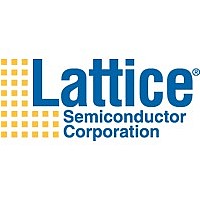LC51024MV-52F484C Lattice, LC51024MV-52F484C Datasheet - Page 14

LC51024MV-52F484C
Manufacturer Part Number
LC51024MV-52F484C
Description
Manufacturer
Lattice
Datasheet
1.LC51024MV-52F484C.pdf
(92 pages)
Available stocks
Company
Part Number
Manufacturer
Quantity
Price
Company:
Part Number:
LC51024MV-52F484C
Manufacturer:
Microchip
Quantity:
480
Company:
Part Number:
LC51024MV-52F484C
Manufacturer:
Lattice Semiconductor Corporation
Quantity:
10 000
Lattice Semiconductor
CAM Mode
In CAM Mode the multi-function array is configured as a Ternary Content Addressable Memory (CAM). CAM
behaves like a reverse memory where the input is data and the output is an address. It can be used to perform a
variety of high-performance look-up functions. As such, CAM has two modes of operation. In write or update mode
the CAM behaves as a RAM and data is written to the supplied address. In read or compare operations data is sup-
plied to the CAM and if this matches any of the data in the array the Match and Multiple Match (if there is more than
one match) flags are set to true and the lowest address with matching data is output. The CAM contains 128
entries of 48 bits. Figure 13 shows the block diagram of the CAM.
To further enhance the flexibility of the CAM a mask register is available. If enabled during updates, bits corre-
sponding with those set to 1 in the mask register are not updated. If enabled during compare operations, bits corre-
sponding to those set to 1 in the mask register are not included in the compare. A write don’t care signal allows
don’t cares to be programmed into the CAM if desired. Like other write operations the mask register controls this.
The write/comp data, write address, write enable, write chip select, and write don’t care signals are synchronous.
The CAM Output signals, match flag, and multimatch flag can be synchronous or asynchronous. The Enable mask
register input is not latched but must meet setup and hold times relative to the write clock. All inputs must use the
same clock and clock enable signals. All outputs must use the same clock and clock enable signals. Reset is com-
mon for both inputs and outputs. Table 9 shows the allowable sources for clock, clock enable, and reset for the var-
ious CAM registers.
Figure 13. CAM Mode
Table 9. Register Clocks, Clock Enables, and Initialization in CAM Mode
Write data, Write address,
Enable mask register, Write
enable, write chip select, and
write don’t care, CAM Output,
Match, and Multimatch
Register
Clock
Clock Enable
Reset
RESET
68 Inputs
CLK0
CLK1
CLK2
CLK3
Routing
From
Input
En Mask Reg
Write Enable
Write Chip Sel
WR Mask Reg
WR don t care
Reset
CLK
Clock Enable
Write/Comp Data
(WD[0:31])
Write Address
(WAD[0:6])
CLK or one of the global clocks (CLK0 - CLK3). Each of these signals can
be inverted if required.
WE or one of the global clocks (CLK1 - CLK 2). Each of these signals can
be inverted if required.
Created by the logical OR of the global reset signal and RST. RST is routed
by the multifunction array from GRP, with inversion if desired
(CLK)
(RST)
(WE)
(EN_MASK)
(CE)
(WR_MASK)
(WR_DC)
(WCS[0:1])
14
‘
‘
128X48
CAM
ispXPLD 5000MX Family Data Sheet
MUL_MATCH
Output
match
Multi-
Match
MATCH
CO[0:6]
CAM
Out
Out
Source












